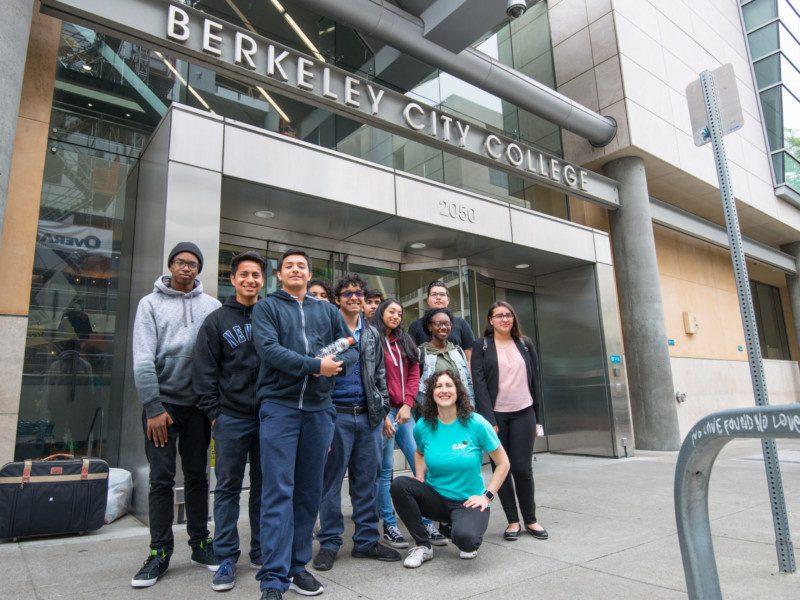Summer Melt Series: Why Community College Might Be Right for You
by Sarah Goudy

For the third piece in our blog series about preventing summer melt, we interviewed CAP College Coach Sarah Goudy, who leads CAP’s community college programming.
- What are the benefits of attending community college (as opposed to a four-year institution)?
Attending community college is an amazing opportunity, not a last resort. Community college is much cheaper, so students who start at community college accrue much less debt than their peers at four-year schools. Students also benefit from smaller class sizes, more flexible class schedules, and professors who are there to teach not research. That’s one of the biggest benefits – it’s much easier to form a relationship with your Astronomy 101 professor when there are 30 students in class rather than 200.
- What steps do students need to take to apply to community college?
Students should identify the most important factors they’re looking for in a college (e.g. transfer rates, location and size of the campus, access to public transportation, average class size, majors offered, etc.). Then they should visit all the colleges they’re interested in, ask questions, and do some additional research to figure out which school is the best academic, social, and financial fit. From there, it’s just a matter of following the steps that are outlined on each college’s website.
- When students decide to attend community college, what steps do they need to take to prepare during the summer after high school graduation?
Students should complete all the enrollment requirements as quickly as possible in the spring. This includes placement tests, orientation, and meeting with a counselor. Then they can register for summer classes so that they get a head start at community college. It’s also extremely important to make an education plan with a counselor and map out the classes for the pathway they’ve chosen. Some local community colleges also offer summer preparation programs. College of Marin, for example, offers Summer Bridge, while Contra Costa College offers Math Jam.
In addition, it’s important for students to seek out clubs or learning communities that can help them stay on track. Several local colleges offer the PUENTE program, Umoja, and small learning communities based on specific majors. These programs offer a way to build a strong, supportive community with professors and peers.
- What are the most common reasons community college students don’t transfer on time?
The system is extremely byzantine and confusing. The UCs and CSUs often have different requirements for the same major, and each individual campus can have different requirements than other schools in the same system. So, the most common reason students don’t transfer is that the process is incredibly difficult. To take the right classes (and as few as possible), students should check in with a counselor regularly. If students plan on transferring to a CSU, they should complete an Associate Degree for Transfer (AD-T). All CSUs are required to accept the AD-T and can only require students to complete 60 additional units once they transfer. For UCs, there are transfer pathways for 21 majors. Students who are studying in one of those 21 fields should complete the transfer pathway because it typically requires fewer courses than meeting the requirements for each individual UC campus.
At CAP, we approach these issues by providing dedicated transfer support. This includes education planning workshops, transfer workshops, a transfer application agreement, a transfer checklist, a financial meeting for all transfer students, and text reminders for transfer students.
- What’s your advice to help students transfer from community college to a four-year institution in a timely way?
Here are the steps I recommend:
- Make an education plan with your counselor. Map out every class you will take each semester and update it whenever there are changes.
- Check in with your counselor at least twice per semester to stay on track.
- Take summer classes.
- If it’s financially feasible, work 15-20 hours a week or less.
- Any community college success stories you’d like to share?
CAP student Luciano G. started at a community college with the intention of transferring in two years. He mapped out all his classes before he even set foot on campus, and he never dropped or withdrew a class. The idea of transferring quickly was a huge motivator for Luciano, and as a result, he will be the first student from Making Waves Academy to transfer out of community college in two years. It’s a difficult feat, as only 4% of California’s community college students transfer within such a short timeframe. Great work Luciano!
